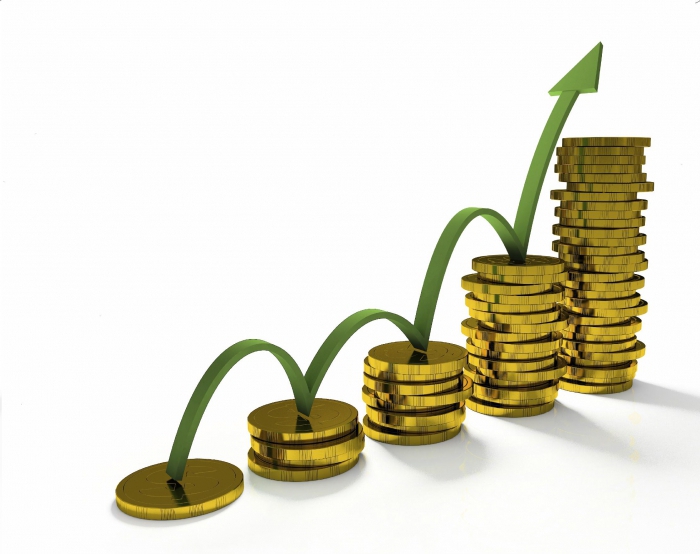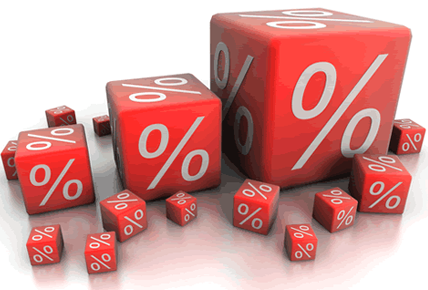Capital is the foundation of any business. There are a large number of approaches to how its structure should be formed and adjusted. The choice of a particular methodology is determined based on a variety of factors. However, in all cases, the task of managers and owners of enterprises is to optimize the capital structure and adapt it to ensure the highest level of business profitability. What methods can be involved? How to determine the optimal capital structure of the company?
The essence of capital structure
What is the capital structure of an enterprise? This term most often refers to the relationship between sources of cash (this may be how equity organizations and borrowed) that are involved in business activities. In some cases, short-term loans may be excluded from the capital structure of the enterprise. Thus, it will present sources that are used for the long-term financing of business activities. The exception is short-term loans, which are issued on a regular basis. They may also include the capital structure of the enterprise. Own and credit funds, first of all, differ in the level of required profitability.
Sources of capital structure
In the capital structure of an organization usually there are 3 main types of sources - borrowed funds, securities-based assets, as well as retained earnings.

Regarding the first element - its structure is most often formed by loans and bonds issued by the enterprise. At the same time, interest paid on both types of loans is usually included in the cost of production. Securities may be represented by shares of various types - for example, ordinary and preferred. Retained earnings, through which the formation of the capital structure of the enterprise can also be carried out, it implies subsequent reinvestment in certain production sectors.
Capital Structure Factors
Let us now consider the main factors that can influence the process of formation of the capital structure. Modern researchers distinguish their following list:
- industry features of the business activity segment of the enterprise;
- organization life cycle characteristics;
- market conditions;
- profitability of the business model;
- the tax burden;
- preferences of managers and owners.

Regarding the first component - industry specifics of the business segment in which the company operates, it should be noted that the capital structure of the enterprise in this case may depend on the resource intensity of production, the company's need for frequent borrowing, or, conversely, pronounced financial autonomy, production characteristics operations.
Regarding the life cycle of a company, growing firms are characterized by a more noticeable share of borrowed capital, while in mature organizations own funds often prevail.
Market conditions are another important factor affecting how the structure of capital of an enterprise can be built. If the environment for carrying out business activities is favorable, then firms, as a rule, are more active in using borrowed funds, and lenders are more likely to issue them. In turn, with negative market factors, it becomes more difficult to get loans.In this case, own funds will prevail in the capital structure of the company.
Profitability business is another critical factor. If it is sufficiently large, then lenders will be more loyal to the company, as a result of which the share of borrowed capital may grow. And vice versa - if the profitability of the business is low, then borrowing will be, firstly, impractical due to the fact that the interest on them may be even higher than profitability, and secondly, lenders will most likely not be sufficient in this case located to build partnerships with the company.

The specificity of taxation is another major factor under the influence of which the structure of the capital of an enterprise is built. If the rates of payments for profit are low, or the company may enjoy certain benefits, then the difference between the indicators of the cost of equity and credit capital may decrease. Thus, the company can afford to borrow more - including through the issuance of bonds.
The specifics of decision-making by the owners and managers of the company also affects how the structure of the capital of the company will be formed. Entrepreneurs may be more or less loyal to loans, or to issue bonds in order to attract external capital. This factor may be subjective in nature and not correlate with the objective characteristics of business processes that are forming in the enterprise. But taking into account the fact that in some cases the set of relevant parameters can be interpreted differently, the willful decision of managers or owners, even if it is based on a personal approach to making decisions on business development, is often the most correct.
The combination of these factors determines the approaches of managers or owners to how the company will form the optimal ratio of own and borrowed capital, as well as to how the financial structure of the company’s capital will be brought to the required values.
Capital structure optimization
We will now examine an aspect that reflects how the resources in question can be optimized. Factors affecting how the composition and structure of the capital of an enterprise are determined, we found out. Our next task is to consider in what ways managers or owners can identify the most correct correlation of the corresponding elements that form the financial resources of the company.
Optimization of the capital structure of the enterprise involves a procedure for calculating the ratio of own and credit funds, at which maximum values are reached, which reflect the market value of the company, and optimal proportions are achieved between the firm's stability indicators and the level of profitability of the capital that it owns.
What patterns in terms of solving this problem are highlighted by modern Russian experts? First of all, it is recommended to pay attention to the fact that the business activities of the enterprise, as a rule, are carried out within the framework of specific life cycles. That is, optimization of the capital structure of an enterprise implies, first of all, the solution of this problem in the context of the current stage of business development.

Among the most dynamic stages of the implementation of entrepreneurial activities is the launch of a business and its “promotion” in the initial phase. In this case, managers and owners will have to put a lot of effort into finding investments, loans and other resources to increase the company's capitalization. At the appropriate stage of business development, the dynamics of the capital structure of an enterprise can be adjusted quite quickly in favor of increasing the share of just the same borrowed funds.The fact is that if they are involved, the necessary liquidity will appear at the disposal of managers and owners. Obtaining it in similar volumes at the expense of own funds may require much more time. In addition, the structure of the equity capital of an enterprise is often characterized by limitations in asset turnover. At the same time, when issuing loans or issuing bonds, exclusively highly liquid resources are at the disposal of managers.
At the same time, the conditions for granting loans are of great importance. If the interest rate on them is sufficiently high - commensurate with profitability, then the company, one way or another, will have to develop at its own expense. At least until lenders are ready to liberalize loan conditions.
In turn, at the stage of business stabilization, the need for loans for the organization may be absent. In this case, the structure of the equity capital of the enterprise will be characterized by the presence of a sufficient amount of assets so that managers can use them for investment and other purposes.
Crisis factors
The market economy is developing in cycles, including crisis. An enterprise as an independent subject of commercial activities may also in some cases experience difficulties. If the company is in crisis, then the structure of the sources of capital of the enterprise can also be reviewed by owners and managers.
What type of resources will be considered the main - borrowed or own, is determined based on many factors. For example, if an enterprise is heavily dependent on refinancing — when some loans are replaced by others in correlation with certain production operations, then the percentage of borrowed funds is likely to remain high. In turn, if the organization’s business model does not involve frequent refinancing, then the company’s management may choose a different path — accumulating its own capital in as large volumes as possible and refusing to attract credit.

In the event of a crisis, an enterprise may lose in profitability, solvency and competitiveness. In this case, the lenders themselves can reduce their loyalty to the business, and managers simply have no choice but to work on increasing or at least maintaining the current level of capitalization at their own expense.
Researchers note that it is extremely difficult to single out universal criteria that would allow for optimal management of the enterprise’s capital structure. Choosing the right strategy depends on a combination of factors that can also affect a business in different directions. According to some analysts, the industry specifics of the company should be considered a determining factor. Thus, the rules for building managerial strategies specific to the banking business, in some cases, have limited applicability in the industry - and vice versa. There is a very significant difference in the approaches used in production and service companies. If only because in the first case, the capital of the enterprise is characterized, as a rule, by large revenues and low profitability, in the second - on the contrary.
In some cases, the structure of fixed capital of an enterprise becomes a secondary criterion for the development of a business. Trends characterizing the dynamics of changes in the financial portfolio of the company, or, for example, planned indicators, come first.
Conservative and liberal business management strategies
Modern researchers distinguish two rather polar approaches to building a business model of an enterprise. The first can be called conditionally "conservative." It involves the maximum consolidation of the company's own resources and the minimum intensity of appeal to creditors.The second approach is “liberal”. It, in fact, is the opposite of the first and involves the most active appeal to creditors and minimizing the amount of the company's own financial assets - for example, in the form of retained earnings. Consider the specifics of both approaches in more detail.
Conservative strategy: advantages and disadvantages
So, the first option for business development is when the structure of the enterprise’s working capital is formed mainly on the basis of the firm’s own resources. The main advantage of this strategy is the absence of the need for planned settlements with the creditor, as a result of a marked reduction in the financial risks of the organization.
At the same time, experts recommend that managers and owners of enterprises take a balanced approach to assessing this state of affairs. It happens when business owners mistakenly believe that the company's equity is free. This is not a completely correct approach. Firstly, because any capital that is not put into circulation is accompanied by some lost profit. At least - due to inflation. Secondly, dividends become the actual payment for capital held by the company. In this sense, the organization’s own funds in some cases may be in real terms more expensive than loans. For example, the owners of Russian LLCs must pay personal income tax on dividends, and if the profitability of the company is lower than the corresponding indicators, then their own capital may begin to burden the company - it is better to put them into production and, if necessary, increase liquidity at the expense of credit funds. Of course, with an adequate rate set by the bank in relation to those.

The development of the company as part of a conservative strategy, according to analysts, reduces financial risks, but at the same time greatly limits the prospects for expansion of the business in the market. Its dynamics, in turn, can become an important criterion of financial stability. In addition, if a company manages to become systemically important in a particular market segment, in the event of a crisis, the state may agree to help. In turn, an organization is more likely to acquire such a status if it has the necessary amount of liquid cash for market expansion. Which, most likely, will be borrowed, and not their own - again, subject to an adequate interest rate on loans.
Liberal strategy
The main advantage of a liberal business development strategy is the ability to provide large-scale market expansion of the company. One of its advantages we noted above - a company can become systemically important and significant for the state. At the same time, the structure of the borrowed capital of the enterprise should be well-designed by managers and owners of the company. This may concern, first of all, the optimal ratio of long-term and short-term loans. On the other hand, in the event of crisis trends or a decrease in the company's revenue for other economic reasons, the debt burden on the business may become excessively high. Therefore, before the transition to a liberal strategy is carried out in practice, managers should conduct an adequate and balanced assessment of the capital structure of the enterprise for correlation with the financial burden on the company.
Note that conservative and liberal strategies are rarely found in their pure form. Moreover, they are often used by businesses alternately - depending on the factors that we noted above.
Methods for increasing the capital of an enterprise
Based on the results revealed by the analysis of the capital structure of the enterprise, managers and owners of the company can develop specific methods by which the organization can increase liquidity. Their essence may be different.
As for the increase in capital from own funds, this can be done by:
- the implementation of funds that are not used effectively enough are considered obsolete or not productive enough for a particular business;
- tightening receivables and improving debt collection by partners;
- optimization of stocks and modernization of production in order to reduce costs.
Regarding the direction of work associated with the use of borrowed funds, activities can be as follows:
- search for the best conditions for refinancing current loans;
- priority repayment of loans with high interest rates;
- issuing bonds with optimal coupon rates.

Large businesses most often practice a combination of these approaches or use them in correlation with specific business processes, as well as the activities of individual production units and branches of the organization. The introduction of certain management approaches the capital of the enterprise is preceded by a rather thorough analysis of financial indicators, activities of various structures of the company, the study of external economic factors.
The political factor in business
In some cases, the impact of the situation may be more significant than the state of affairs within the company. It happens that the choice of a particular strategy that determines how the structure of the capital of the enterprise will look is due not to economic, but to pure political reasons. In this sense, the analysis of the economic component may play a secondary role. An enterprise may be arbitrarily effective in terms of the business model, but if it is influenced by a political factor, it will not be of much importance.








